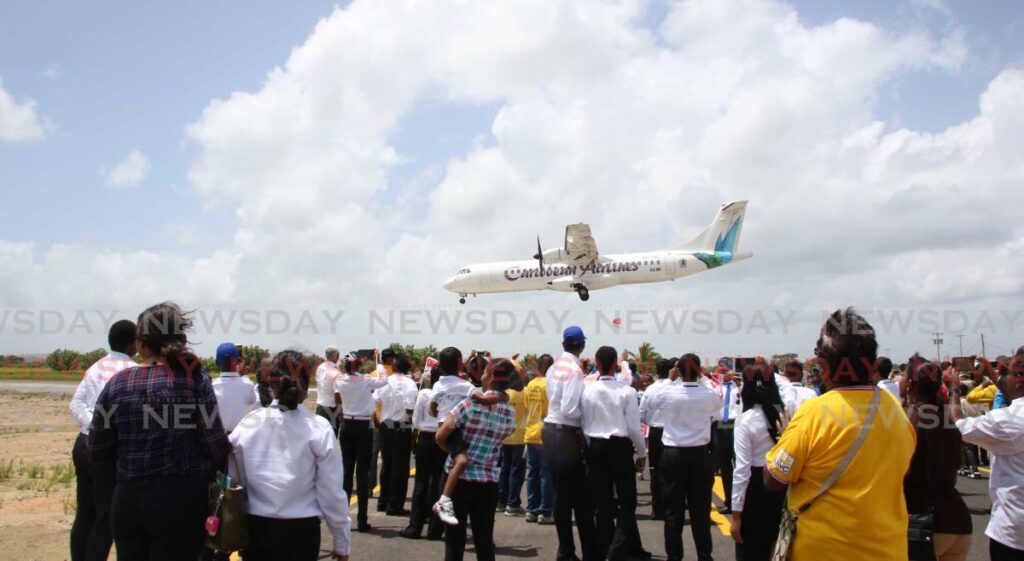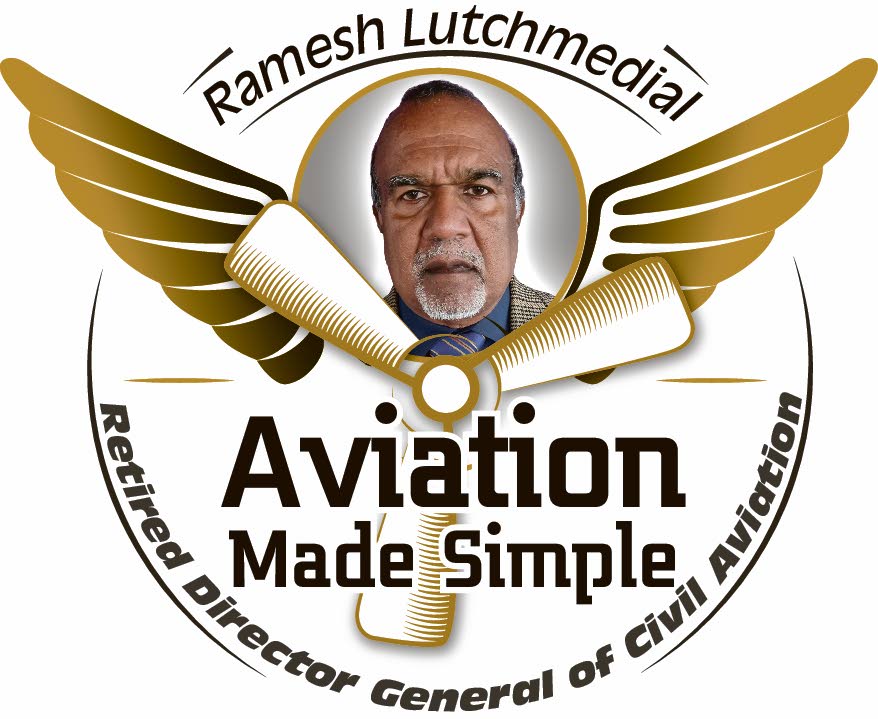UTT – beacon of aviation training

Recently, aeronautics students at the University of Trinidad and Tobago’s (UTT) aviation campus created aviation history by successfully flying the first locally designed and manufactured remote control model aircraft.
In a related development, 90 per cent of a recent intake of aircraft technicians by Caribbean Airlines Ltd (CAL) were graduates of UTT’s aviation campus.
These two events underscore the contribution that UTT is making towards the development of world-class aviation education in the Caribbean, particularly in TT.
UTT, the brainchild of Prof Kenneth Julien, TC, opened in 2004 as the first full local degree-awarding tertiary-level educational institute. Prof Julien was the first chairman of UTT’s board of governors.
UTT recognised the vital importance of aircraft maintenance in the continuing airworthiness of aircraft and maintaining the highest levels of safety in the global aviation industry.
In October 2014, then Minister of Tertiary Education Fazal Karim took the initiative and launched the UTT aviation campus. The campus at present occupies ten acres of land strategically located next to the Camden airfield, which was built by the US during World War II.
The Boeing 727-200 F donated by Federal Express landed flawlessly at Camden in August 2015.
The campus has a 39,000-square-foot hangar that can accommodate the Boeing 737 series of aircraft. It is equipped with state-of-the-art classrooms.
Practical training is done using workshops and modern shop-based gas turbine engines, variable pitch propellers, electrical, fuel system, auto pilot and instruments simulators. Practical training is further supplemented by hands-on work on a Boeing 727-200 F equipped with JT8-17/15 jet engines, a Sikorsky S76A++ rotorcraft and a Cessna 310 aircraft. These facilities are second to none in the Caribbean region.
The aviation programs offered by UTT are under-graduate degrees in aircraft maintenance and management, aeronautical and airworthiness engineering and postgraduate degrees that are a combination of taught and research-based courses. A certificate programme in aviation technology is also offered at UTT.
All UTT’s aviation training programmes are accredited by the Accreditation Council of TT (ACTT) and qualify for GATE funding. They also satisfy the knowledge requirements for the European Aviation Safety Agency (EASA) Part 66 Aircraft Maintenance Engineer Licence (AMEL).

EASA regulates all aviation activities in European Union member countries and its AMEL standards have been adopted by a number of countries worldwide, including Australia, New Zealand, Singapore and the United Kingdom.
The aviation campus faculty comprises of a cadre of highly trained and qualified lecturers under the visionary leadership of its director, Mr Parissram Jaggernath, a former CAL aircraft maintenance and technical training manager. Mr Jaggernath, an aviation veteran, holds several aircraft maintenance engineer licences and a master’s degree in aviation management from UWI and possesses a wealth of broad-based aviation experience.
For more than a decade, the ICAO has been addressing the future shortages of aviation professionals such as pilots, engineers and air traffic controllers. To treat with this matter, in 2009 ICAO launched its Next Generation of Aviation Professionals (NGAP) programme to ensure that enough qualified and competent aviation professionals are available to operate, manage and maintain future international air-transport systems. The UTT programmes fit the template of ICAO’s future aviation professionals, with the management and aeronautic components of its syllabi complementing the regulated technical content.
This is critical, as a large contingent of the current generation of aviation professionals are retiring, and access to affordable training and education is increasingly problematic. Also, aviation competes with other industry sectors for highly skilled professionals.
Attracting and educating the next generation of aviation professionals also involves working with national and international education and labour stakeholders.
UTT is assiduously working in tandem with both local and international aviation partners to meet the NGAP objective of ICAO by focusing on the critical human-resource challenges facing aviation stakeholders. In this regard UTT’s goal is to provide a steady, strong supply of skilled, trained, licensed and competent personnel to meet the demands of the global air transportation system of the future.
The US Federal Aviation Administration (FAA) recently implemented the administrative procedures to permit foreign-based FAA approved aviation maintenance technicians schools under rule 14 Code of Federal Regulation Part 147.
This means UTT can easily become a foreign-based FAA-approved AMT school because of its modern facilities and workshops and highly trained and qualified faculty. In this way, UTT would be paving the way for its graduates to compete effectively in the global aviation job market, since their qualifications will be recognised by the global aviation regulatory bodies.
There are other aviation opportunities available to UTT to further contribute to the development of the local aviation industry. On such opportunity is the establishment of an approved maintenance, repair and overhaul (MRO) facility at Camden that can do maintenance work on the ATR -42/72 aircraft. The Camden airfield can accommodate aircraft such as the ATR -42/72 and similar types of aircraft.
Achieving UTT aviation training goals and objectives requires the unswerving support and collaboration of all aviation stakeholders. It can bring in foreign-exchange earnings and create opportunities for CAL and other regional operators to benefit from local-content MRO capacities.


Comments
"UTT – beacon of aviation training"